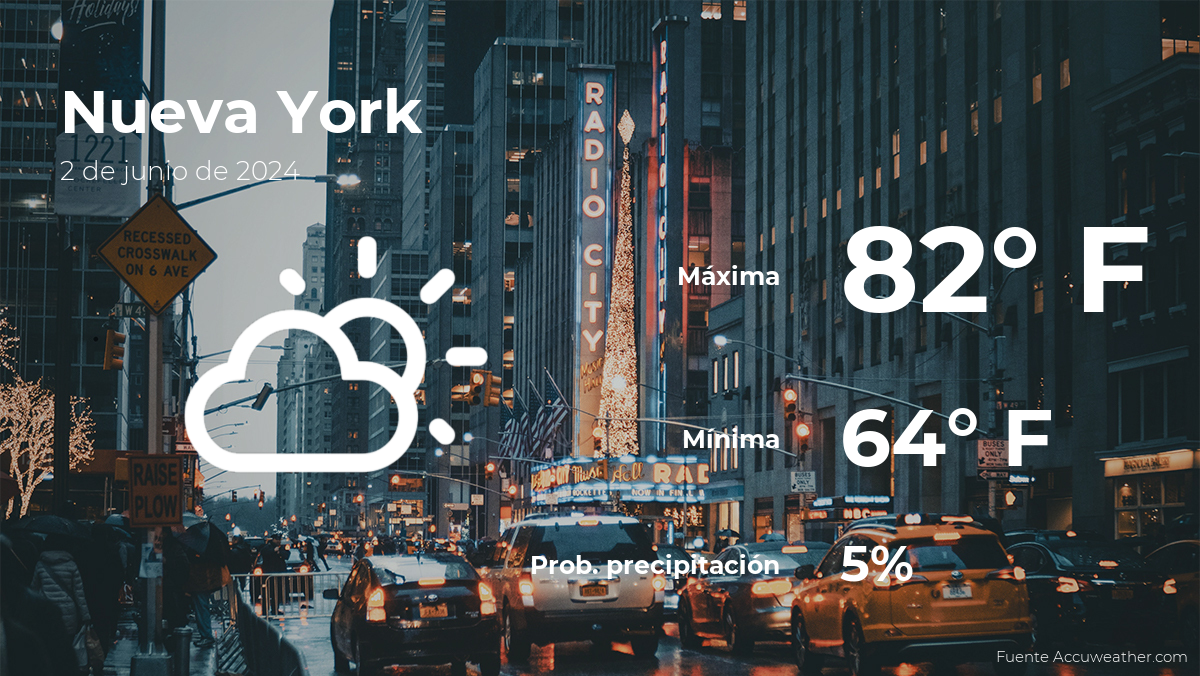
By The newspaper
02 Jun 2024, 06:00 AM EDT
What clothes should you take out of your closet to go out this Sunday in New York? The weather forecast for the next few hours in the Big Apple shows a maximum temperature of 82 degrees Fahrenheit (28ºC) and a minimum of 64 degrees Fahrenheit (18ºC). Along with this, the thermal sensation or “real temperature” expected for this day will be 90ºF (32ºC) maximum and 90ºF (32ºC) minimum.
The probability of rain is 5% during the day and 80% at night, while we will have 12% cloud cover during the day and 46% after moonrise.
Wind gusts will reach a maximum of 3.73 mph during the day and 1.24 mph at night, so it is recommended to wear appropriate clothing. At this time of year, sunrise will be at 5:26 a.m., while sunset will occur at 8:22 p.m. In total there will be 15 hours of sun during the day.
The weather in New York tomorrow will have clouds and clearings with the probability of some isolated precipitation. Temperatures will vary between 61 and 79 degrees Fahrenheit (16 and 26ºC). Chances of rain will be 40% in the morning, 6% in the afternoon and 40% at night.
Don’t forget to check the latest weather news at www.eldiariony.com/clima
The weather in New York
New York’s climate is a primarily humid climate, characterized by cold winters and hot summers. Precipitation is common throughout the year, with storms during summer times and snowfall in winter. The proximity of the Atlantic coast helps soften extreme temperature changes. The coldest months are December and March, while the hottest are between July and August.
What is the climate in the United States?
A country as large as the United States has very different climates depending on the area and time of year. On the East Coast, the predominant climates are the humid subtropical climate in the southeast of the country and the humid continental climate further to the north, specifically, towards latitudes between 40° N and 70° N.
The American Northeast has a humid continental climate with constant rain throughout the year, turning into storms in summer and snow in winter. The southeastern United States has a humid subtropical climate with hot summer temperatures, cool winters, and notable rainfall.
In the western region of the United States there are at least three major predominant climates: semiarid, arid and Mediterranean. The cold semiarid climate encompasses the west central and north-south United States, with little rainfall and low temperatures.
The southwest has a cold or warm arid climate, with freezing winters and mild summers and very mild summers and mild winters. Both have little chance of rainfall during the year. The Mediterranean climate is located in the coastal area of the American West and has rainy, mild winters and dry, hot summers.
